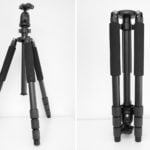Workflow and Time Management: Part 2, FCPX
Just to be clear, I am not an editor. I have sat in on several projects with various editors and have stumbled through some of my own personal projects to a passable level. What I have learnt from this is that editing is both an art and a craft. And when you are not in control of your craft, it can be a long hard slog to reach your artistic goals. I have wasted many an hour to achieve something that a professional would achieve in minutes. That is why I generally prefer to pay someone who knows what they are doing.
On a project such as FHaB, travelling around South America for close to two months, having an editor on constant call to deal with the ever-increasing stream of footage coming in is not a realistic option. Apart from the absurd cost of such an arrangement, there is no quick way to get the footage to an editor when on the road, much of the footage would not yet be earmarked for any particular edit and it wouldn’t be long before chaos would raise its ugly head and you’d have a mountain of unsorted material piling up. I’m stressed just thinking about such a scenario!
The only solution was for me to become a better editor and, with that in mind, I set about choosing the software that was right for me. It quickly came down to a choice between Adobe’s Premier Pro and Apple’s Final Cut Pro X. Looking at the title of this piece, you can see that I chose FCPX but it was not a straight-cut decision. Premier is an excellent editing system which allows for a seamless interaction with Adobe’s other class-leading softwares, Photoshop and After Effects. That sentence there says it all and is more than enough reason for anyone contemplating a career in editing to go down the Adobe route. When talking to a colleague who had recently switched from FCPX to Premier, the deciding factor was that working within Adobe gave him a smoother experience when putting the final touches to an edit, such as colour grading. He much preferred FCPX for the initial import, data management, and first edits but was prepared to sacrifice that simplicity for the ability to seamlessly access the tools for the finishing touches.
I talked to him about FHaB and the trip around South America, about how I would be shooting tons of material over almost a two month period, about needing to organise and make selections quickly, about making edits on the road so as to upload little snippets of video when the feeling arose and the time was right… I had already made my decision that FCPX was the right editing software for this environment but was very pleased to hear that he fully agreed with my decision. The amount of organising that can be done in FCPX at the import stage and before beginning editing in the timeline is nothing short of software design magic. For example, what you can do with keyword collections and smart collections is a thing of absolute beauty and, when mastered, will make your ability to access the material, then or at some later date, incredibly intuitive.
You’ll notice that the previous sentence had the words ‘when mastered’. This is where the final piece of the puzzle falls into place. Without the knowledge of how to use the tools at your disposal, you’re just blowing smoke rings. With this in mind, I checked out various tutorials available for FCPX, read reviews and users’ comments, and didn’t take long to decide on the tutorials offered by Ripple Training. There are other companies out there that also received positive reviews but Ripple Training seemed to receive consistently high ratings and was often one of the first on people’s recommendations. I opted for their more expensive but more comprehensive package, the Essentials Bundle, because it offered a wider range than their entry level FCPX tutorials.
I have been working through the tutorials in a way-too-leisurely way for the last month (July is time-out time in Finland) and have three more months to become fully up-to-speed with FCPX. Proof is in the pudding, as they say, so I will report back when I am on the road and let you know if my workflow has descended into a seething incoherent visual nightmare or if I have maintained a calm serenity conducting a series of imaging masterpieces! Somewhere between the two would be good. Always willing to learn, that’s me. Actually, the learning curve is a never-ending upward slope as these powerful softwares become more user friendly and intuitive. I mentioned in my first workflow post, on Phase One’s Capture One, that I used to be just a photographer and had others do the developing (processing), printing and retouching. Now I can do every one of those things to a professional standard, right up to printing a book good enough for any coffee table, all from the comfort of this chair! The sunshine outside the window laughs at me.
(UPDATE 19/03/2020: I am updating the site with a new theme a few years down the line, re-reading some of these early posts and smiling at my naiveté. I shot a LOT of video on the trip, NEVER found the time to do any editing on the road. Barely had time to stay on top of the stills. Older and wiser now. But I still hold that the information in this post is true, with updated links. If someone does a similar trip but with less running around like a headless chicken, then it should work.)
Comments are closed.


